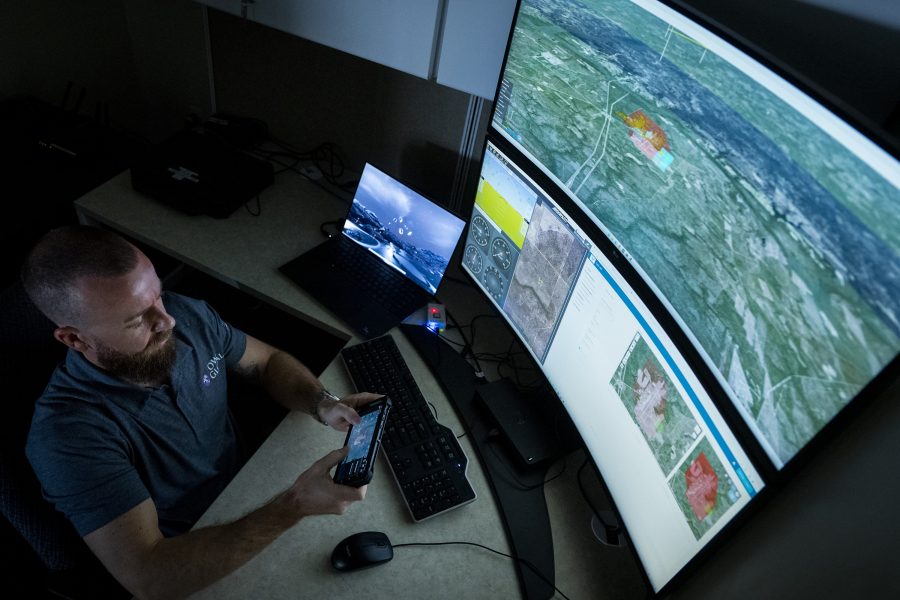Deconflicting airspace was rarely a problem in the early days of Predator drones, but today the number and types of drones is rapidly expanding, with some that can be carried in backpacks and others that lift off vertically. That makes managing airspace a challenge.
Army Chief of Staff Gen. James C. McConville complained about the “industrial age” system for deconflicting crewed aircraft, drones, and surface-to-surface rockets during an exercise last winter. Air Force officials told Air & Space Forces Magazine soon after that the Army and Air Force were working to develop a better approach in the future.
Now the Air Force has a CLUE about what that future looks like: the Collaborative Low-Altitude UAS Integration Effort, a product of the Air Force Research Laboratory’s Information Directorate and AFWERX, AFRL’s innovation directorate. The new UAS Traffic Management (UTM) system was installed at Eglin Air Force Base, Fla.
“Airspace management will play a key role for the future of air mobility,” Darshan Divakaran, AFWERX’s head of airspace innovation and partnerships said in a June 29 news release.
Located at Eglin’s Duke Field, the UTM system seeks to prove that “current “air traffic management systems can ensure complete safety as drones and electric vertical takeoff and landing [eVTOL] aircraft take flight,” according to the Air Force.
Eglin’s 413th Flight Test Squadron is responsible for evaluating and testing the commercial CLUE system, AFWERX said. “The testing will focus on evaluating the UTMs’ capabilities for deconfliction, communication, and security, as well as low-altitude weather and beyond-visual-line-of-sight operations.”
Eglin is the primary proving ground, but testing also will take place elsewhere, AFWERX said. The Air Force is also working with Federal Aviation Administration, Department of Transportation, and NASA in seeking to maintain tracks on the small UASs at altitudes up to 12,000 feet .
Future testing at Eglin will involve a variety of UASs under 70 pounds, a size that will allow the drones to “fly more often and with fewer restrictions,” according to Maj. Riley Livermore of 413th Flight Test Squadron. The Air Force then hopes to start testing how electric vertical takeoff and landing aircraft, larger drones, and other aircraft can be operated together.
The CLUE system at Eglin has been used to “track two to three simulated uncrewed systems operating in their designated airspace along with live, manned air traffic,” said Brooke Ezell of AFWERX. “This provided a really helpful picture for how manned and uncrewed air traffic can coexist safely.”
